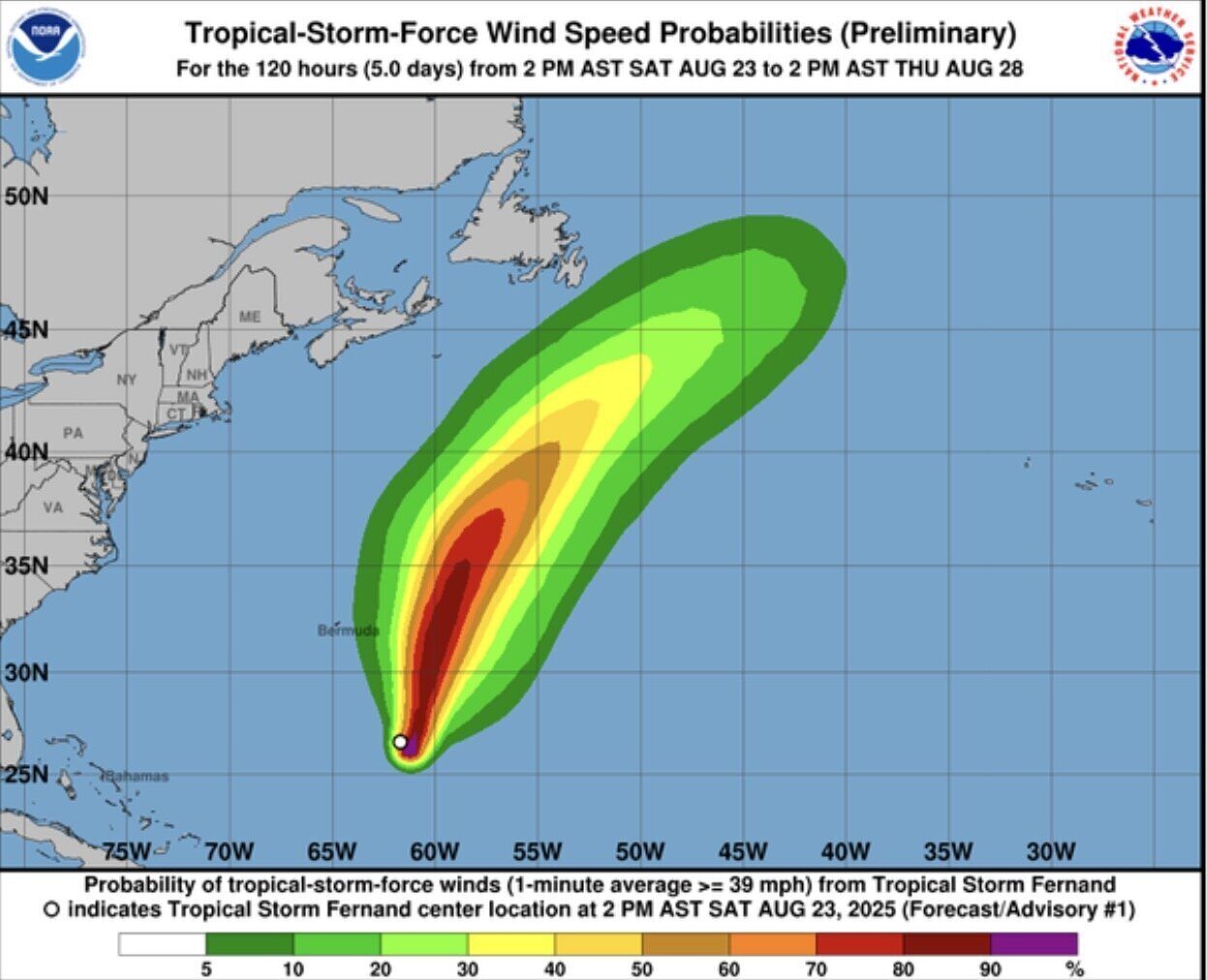The latest hurricane information from the US National Hurricane Center (NHC) said that Hurricane Fernand is forecast to continue to be offshore and is likely to strengthen into a hurricane on August 25.
US hurricane forecasters predict Fernand will move north-northeast in the following hours.
"Fernand is forecast to move east of Bermuda and across the wide waters of the northern subtropical Atlantic," the bulletin said.
After strengthening into a typhoon on August 25, Fernand is expected to weaken on August 26.
Fernand is the sixth storm of the 2025 Atlantic hurricane season. The latest storm appeared right after Erin, which formed in the same area on August 15 and was the first to become a hurricane of this year's hurricane season.
Erin did not make landfall, but at its peak, the system strengthened into a powerful Category 5 hurricane.

The National Oceanic and Atmospheric Administration (NOAA) forecasts that this year's hurricane season will be more intense than normal, with about 13 to 18 named storms, 5 to 9 of which will become hurricanes.
A tropical storm forms when maximum sustained winds reach at least 63 km/h. If the wind speed reaches 119 km/h, the storm is classified as a typhoon. Hurricanes are classified from Category 1 to Category 5, of which Category 3 to Category 5 (over 178 km/h) is considered a major storm.
In addition to Fernand, US weather forecasters are also monitoring a low pressure about 800km east of the Windward Islands in the Caribbean. It is forecasted that low pressure causing rain and thunderstorms that do not comply with this law have a 40% chance of strengthening into storms or tropical depressions within the next 2 to 7 days.
"Regardless of the developments, local heavy rains and strong gusts of wind are still possible across the Windward and Leeward Islands on August 24 and 25," the bulletin said.
According to the US National Hurricane Center, the depression immediately following Fernand is expected to enter the central Caribbean on August 26. Here, weather conditions are expected to be less favorable for a stronger system.
The peak typhoon season lasts from mid-August to October, while the entire typhoon season lasts for 6 months from June 1 to November 30.











